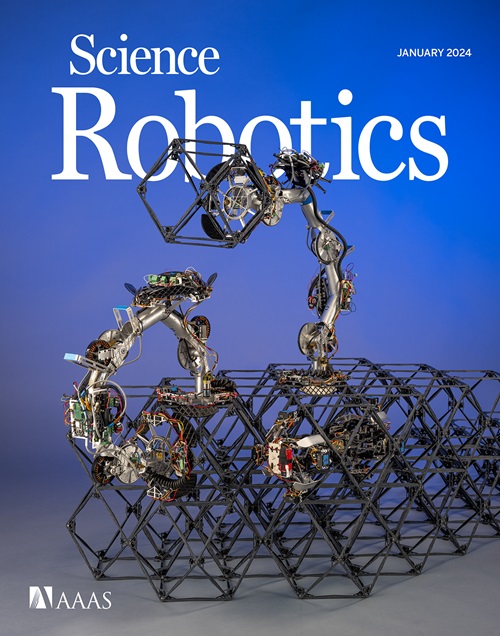Estimating human joint moments unifies exoskeleton control, reducing user effort
IF 26.1
1区 计算机科学
Q1 ROBOTICS
引用次数: 0
Abstract
Robotic lower-limb exoskeletons can augment human mobility, but current systems require extensive, context-specific considerations, limiting their real-world viability. Here, we present a unified exoskeleton control framework that autonomously adapts assistance on the basis of instantaneous user joint moment estimates from a temporal convolutional network (TCN). When deployed on our hip exoskeleton, the TCN achieved an average root mean square error of 0.142 newton-meters per kilogram across 35 ambulatory conditions without any user-specific calibration. Further, the unified controller significantly reduced user metabolic cost and lower-limb positive work during level-ground and incline walking compared with walking without wearing the exoskeleton. This advancement bridges the gap between in-lab exoskeleton technology and real-world human ambulation, making exoskeleton control technology viable for a broad community.
估算人体关节力矩可统一外骨骼控制,减少使用者的工作量。
机器人下肢外骨骼可以增强人类的移动能力,但目前的系统需要对具体情况进行广泛的考虑,这限制了其在现实世界中的可行性。在这里,我们提出了一个统一的外骨骼控制框架,该框架可根据时序卷积网络(TCN)对用户关节力矩的瞬时估计,自主调整辅助功能。在我们的髋关节外骨骼上部署时,TCN 在 35 种行走条件下的平均均方根误差为每公斤 0.142 牛顿-米,无需针对特定用户进行校准。此外,与不穿戴外骨骼行走相比,统一控制器大大降低了用户在平地和斜坡行走时的代谢成本和下肢正功。这一进步缩小了实验室中外骨骼技术与现实世界中人体行走之间的差距,使外骨骼控制技术在更广泛的群体中得以应用。
本文章由计算机程序翻译,如有差异,请以英文原文为准。
求助全文
约1分钟内获得全文
求助全文
来源期刊

Science Robotics
Mathematics-Control and Optimization
CiteScore
30.60
自引率
2.80%
发文量
83
期刊介绍:
Science Robotics publishes original, peer-reviewed, science- or engineering-based research articles that advance the field of robotics. The journal also features editor-commissioned Reviews. An international team of academic editors holds Science Robotics articles to the same high-quality standard that is the hallmark of the Science family of journals.
Sub-topics include: actuators, advanced materials, artificial Intelligence, autonomous vehicles, bio-inspired design, exoskeletons, fabrication, field robotics, human-robot interaction, humanoids, industrial robotics, kinematics, machine learning, material science, medical technology, motion planning and control, micro- and nano-robotics, multi-robot control, sensors, service robotics, social and ethical issues, soft robotics, and space, planetary and undersea exploration.
 求助内容:
求助内容: 应助结果提醒方式:
应助结果提醒方式:


